By Carlo Platella
A revolution that is not surprising at Haas. The Italian-American team, last at the end of 2023, presents itself at the starting line in 2024 with a new technical and managerial direction of the team, as well as with a car completely different from the previous ones. What stands out in the VF-24 are the suspensions and not only for their importance in ground effect Formula 1, being called upon to stabilize the surface at a constant height from the ground in various driving conditions. In fact, Haas purchases the suspension group entirely from Ferrari, from which it inherits the latest updates also present on the SF-24.
The lenses of the VF-24
The use of Ferrari power units, gearbox and suspensions significantly influenced the designs of the latest Haas, which until 2023 closely followed the concept of the Maranello Reds, characterized by high and wide bellies. Over the course of the last season, however, the Italian-American team encountered difficulties in extracting further performance from the concept developed up to that point, the potential of which can never be precisely estimated in the setup phase. Haas has therefore decided to take a step back, developing a completely new aerodynamic look to be tested on the track by the end of the year, in order to collect useful information for the 2024 project.
The new package debuted in the Austin race, anticipating many of the solutions found on the VF-24. Given the frenetic development over six months, it was inevitable that last October the concept was still in its infancy, releasing less downforce than the version from earlier in the year. Nonetheless, Kevin Magnussen had words of appreciation: “It's better from a driving point of view, simpler, the balance is more constant. This is why you don't he sees a step back when we run with the new spec, despite having less load”. Haas aims to build on the base set for late 2023. The new concept is now being pushed forward to extract greater levels of downforce and aerodynamic efficiency, but with better character and rideability than the VF-23 design.
Suspensions
The Ferrari front suspension proposes the push-rod scheme of recent seasons, with the rod that implements the spring-shock absorber group housed in the upper part of the chassis. However, we note how the configuration of the upper triangle has changed. In fact, the front and rear elements are now staggered in height (1), outlining the anti-pitch kinematics that stabilizes the posture of the bottom during braking, a sign that this is the specification developed by Ferrari for 2024.
The technical choices made by the Maranello supplier left no alternative but to remain faithful to the tie rod scheme for the rear suspension. The moving back of the rod compared to 2023, however, confirms that the VF-24 also features Ferrari components updated for 2024 at the rear. Haas also thus benefits from the new internal mechanics of the spring-shock absorber group, as presented by the Cavallino's technical director Enrico Cardile: “The mechanics of the rear suspension are located differently inside the transmission case. It's a new concept, for us it is an innovationbecause it is a different way of managing the suspension compared to what was done in the past.”
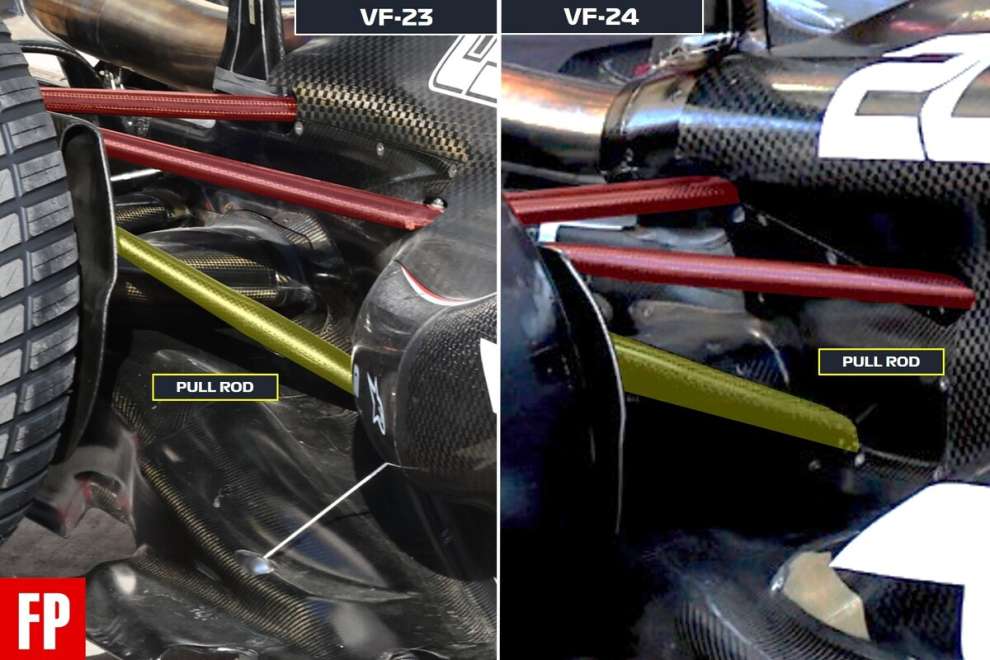
Cooling down
Just like Ferrari, Haas also adapts to the technical dictates now dominant on the grid. The side radiator vents, for example, are wider and flatter than on the VF-23 (2), continuing a development that had already begun to go in this direction in 2023. The thinning of the air intakes favors the channeling of flows under the side, which is flared more thanks to the movement of the lateral impact structure, also allowing for an increase in local pressure, used as a shield against external turbulence.
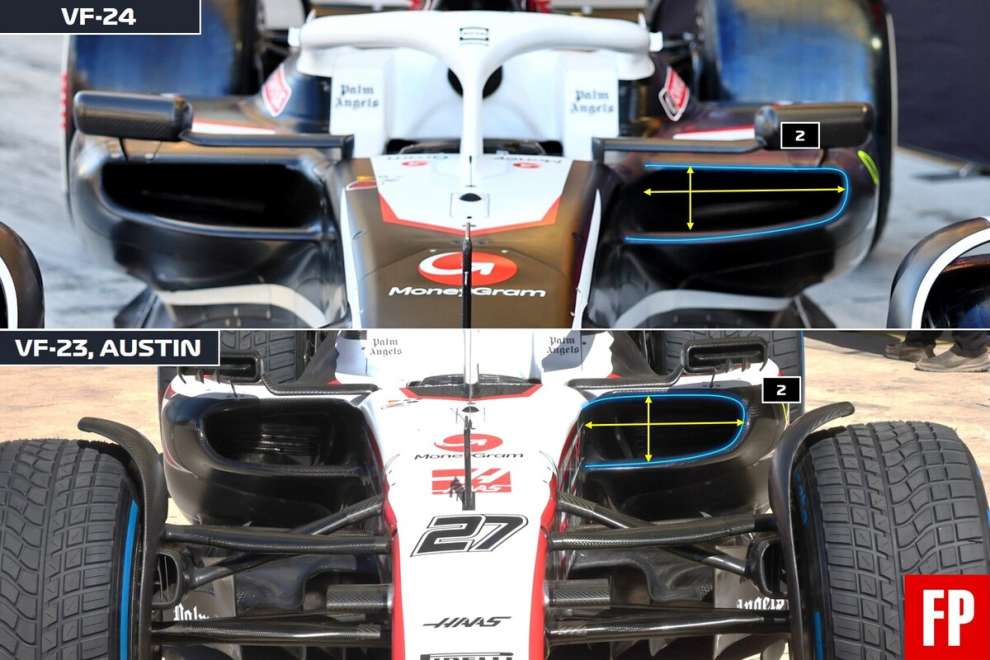
The crushing of the side vents forces Haas to compensate with the dynamic air intake at the rider's head. In addition to the triangular section for drawing air for the engine, there are two side openings for cooling (3), which is however an indication of a centralization of some of the internal radiators, with the aim of freeing up space from the sides. This choice goes in the opposite direction to what Ferrari did.
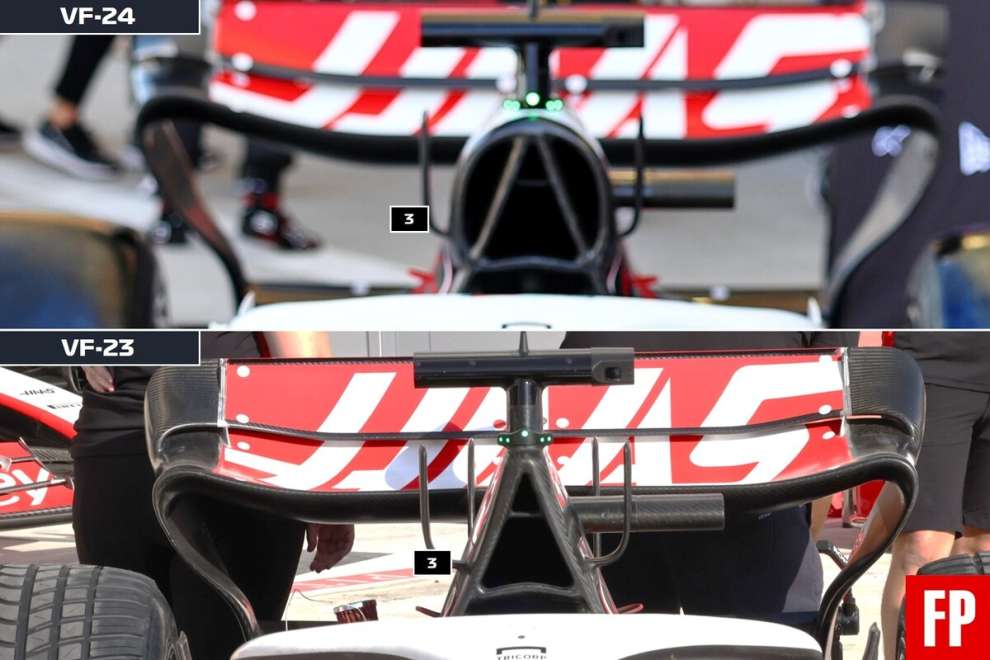
Car body
Haas continues the bodywork renovation that began in 2023. At the start of last season, the VF-23 sported high, wide bellies, which channeled the flows at the top of the rear end towards the beam-wing. The extensive upgrade package introduced at Austin had begun the conversion to the flat-bellied design, now completed with the VF-24. The new bodywork conveys the flows adhering to the surfaces in the lower part of the gearbox, injecting energy into the rear area of the diffuser, encouraging its work of extracting the flows from the bottom.
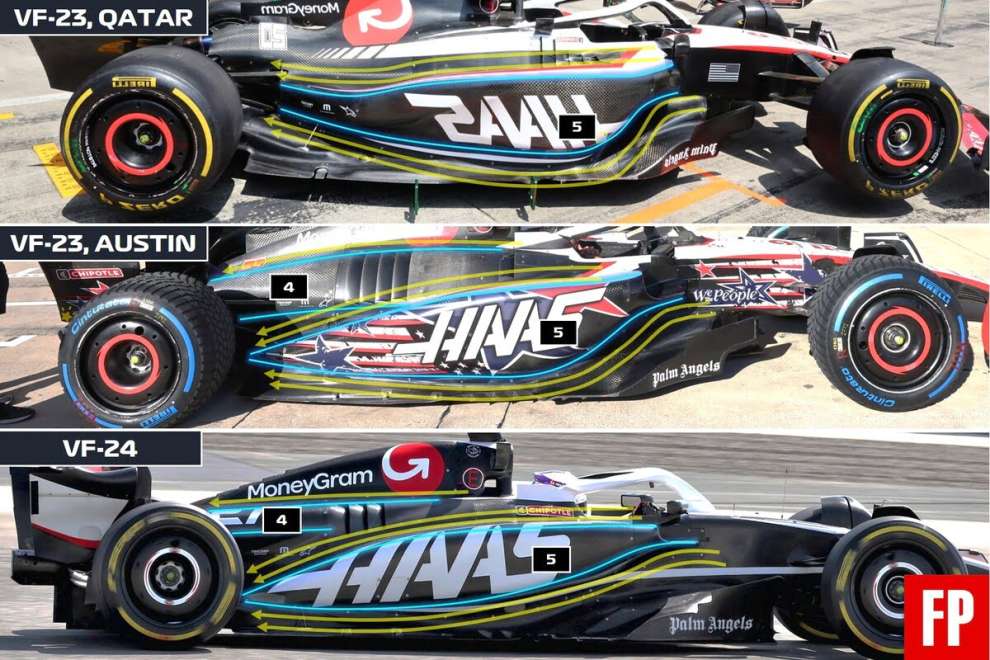
The Austin package featured a rather large and squat hood, affected by the pre-existing layout of the internal components. For 2024, Haas has therefore worked to optimize the housing of the radiators and electronic components inside the bodywork, allowing for a slimming down of the bonnet (4). It also increases the depth of the flare under the side (5), improving the channeling of flows and the transport of energy towards the rear. The excavation is made possible by moving the lateral impact protection structure inside the bottom, whereas previously it was integrated into the belly (6).
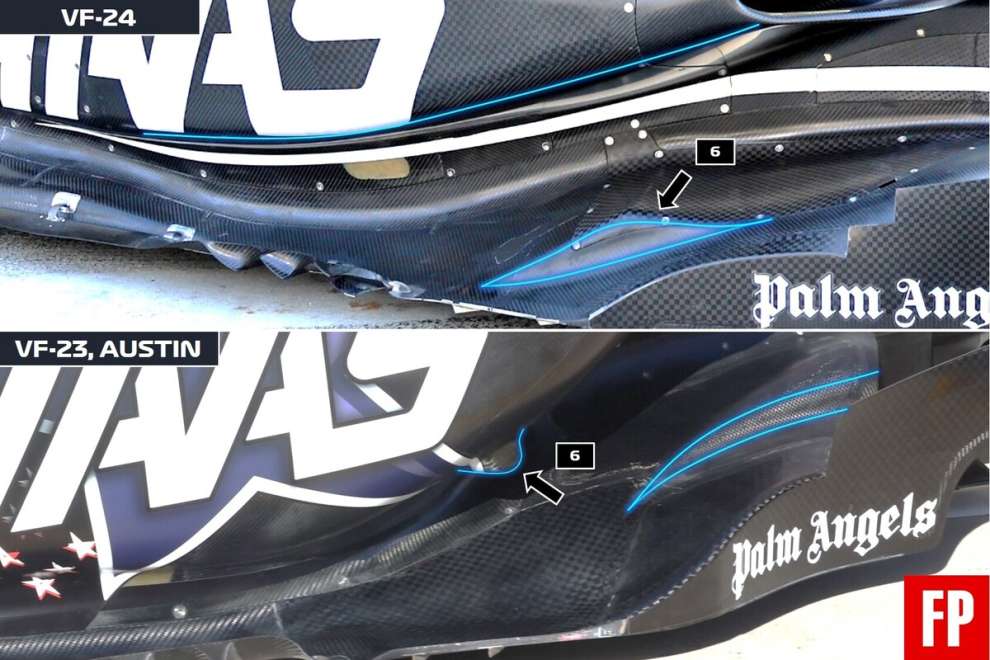
Bottom
The biggest revolution on the new Haas concerns the bottom, a true discriminant for performance on ground effect Formula 1s. The entrance section of the Venturi channels is completely new, remaining high across the entire width and abandoning the stepped layout of the VF-23 (7), inspired by the Ferrari of late 2022. There is also a different distribution of the lateral distances between the conveyors of flow, with the innermost element now aligned with the chassis, as also seen on other cars. Haas chooses to reduce the air flow conveyed to the rear diffuser, expelling a greater fraction of the flows laterally to generate downforce at the center of the car.
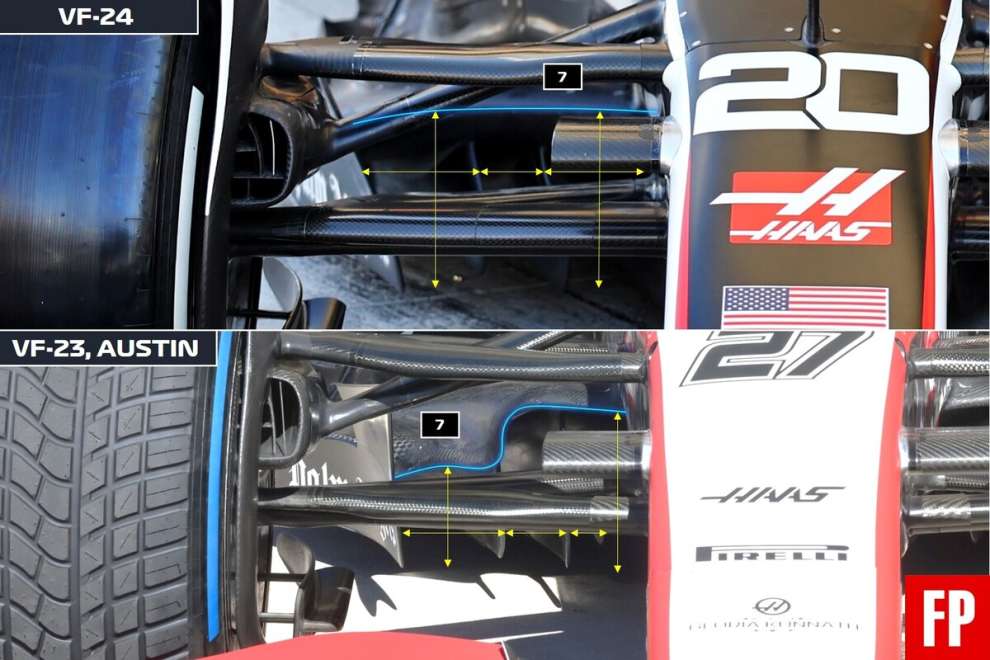
Even the outermost flow diverter appears completely redesigned. The recess in the lower and advanced part (8) disappears, while the connection with the Venturi channel now presents a serrated shape (9), which introduces small vortices.
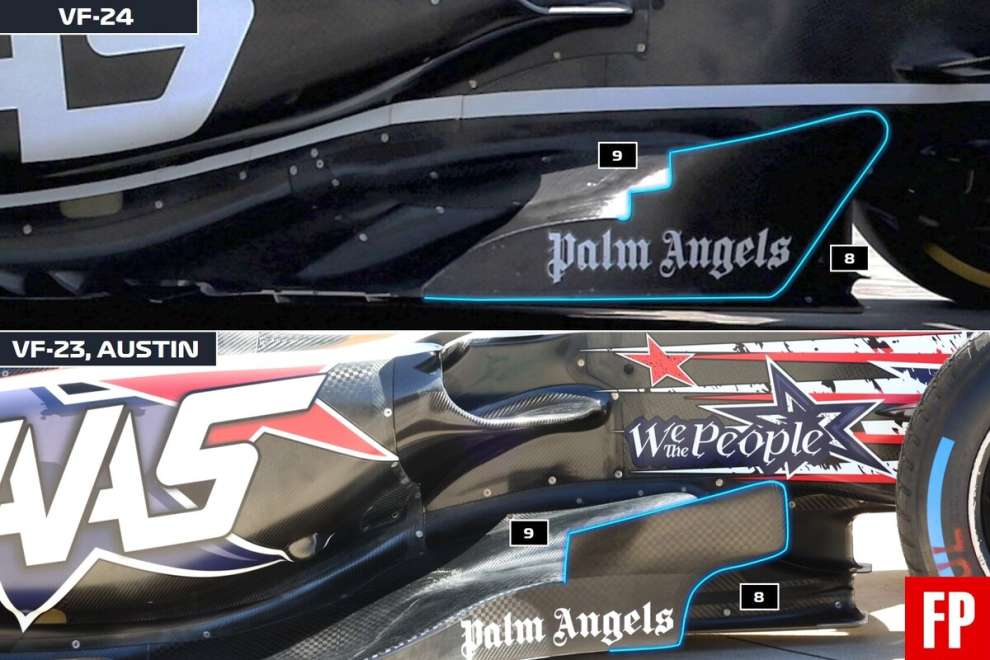
The outer edge of the bottom, a crucial area for performance, is an evolution of the specification introduced at the last Austin Grand Prix. The central rise has been shortened, sacrificed to introduce the double cascade of profiles inspired by Red Bull and taken from various cars (10), which helps the lateral extraction of flows from the bottom.
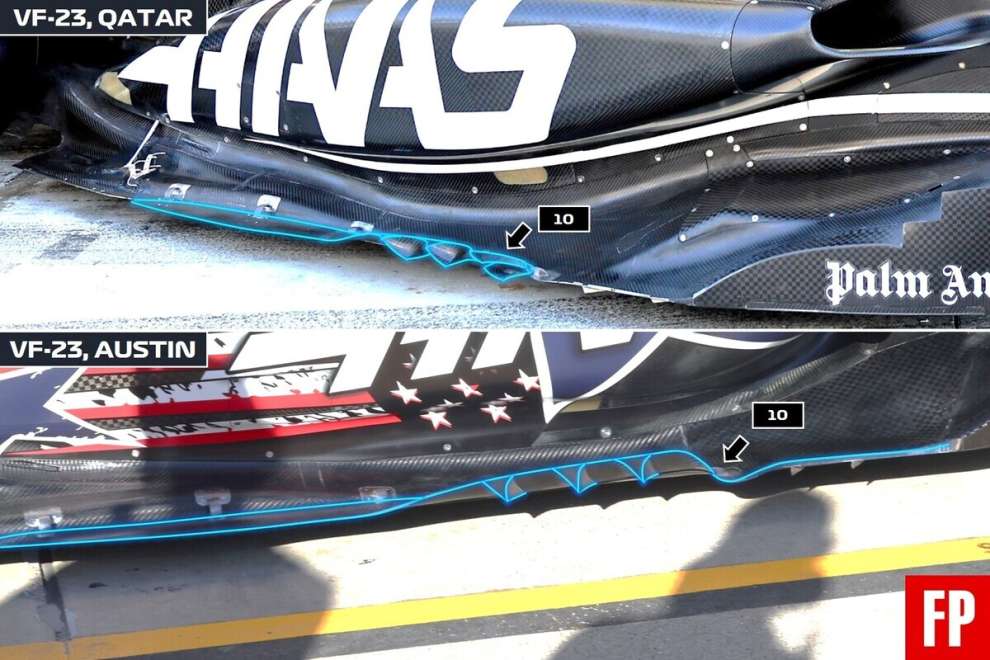
Finally, the front wing appears very similar, if not identical, to the end-2023 specification. The main profile continues to curve downwards in the central part, just as the distribution between the fixed and adjustable sections of the upper flaps is unchanged (11). Unlike Ferrari, Haas does not give up the four flow diverters straddling the last two elements (12), which help push the flows outwards to mitigate general harmful turbulence from the front wheels.
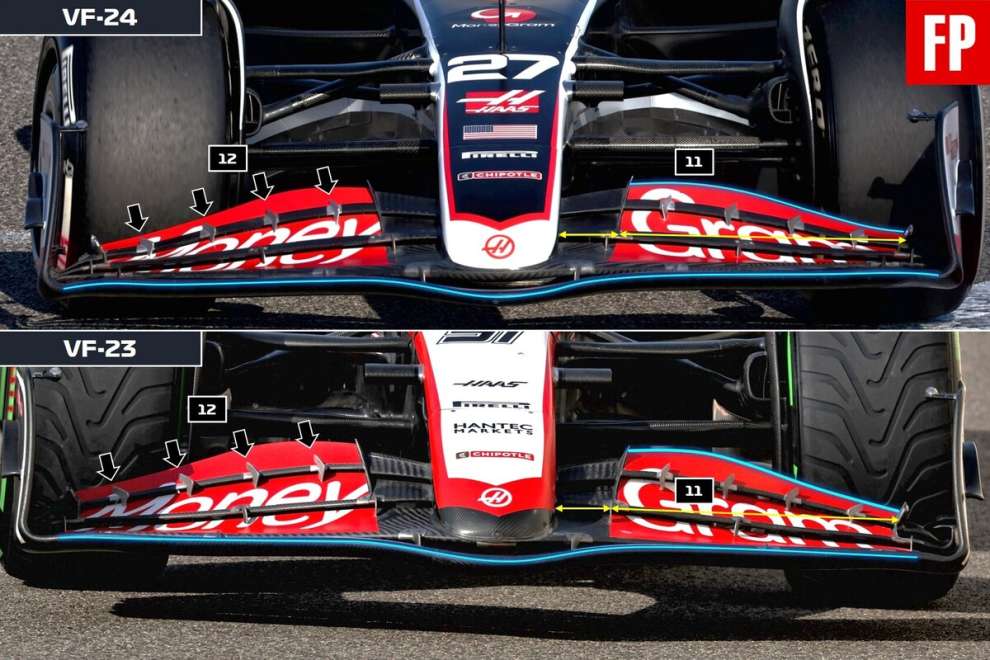
Uphill start
Haas starts again from a new concept, with a car that inevitably cannot express the same level of detail seen on other single-seaters that have been working in this direction for some years. Team Principal Komatsu expects a start as the last force on the field, thanks to a project defined later than its opponents, considering how the previous concept continued to be developed for the first part of 2022. The priority for Haas is to ensure the drivability and solidity of the VF-24, with the aim of equipping it soon with upgrades to catch up.
#Haas #technical #analysis #Ferrari #suspensions #VF24

